Spring is the season of new beginnings and new growth. As the temperature starts to warm up and everything begins to thaw from the winter, spring foraging options increase! This is the time of year for fresh salad greens, tasty spring flowers and shoots, medicinal plants, and a few edible mushrooms. This list of what to forage in spring will help you get started on your spring foraging adventure!
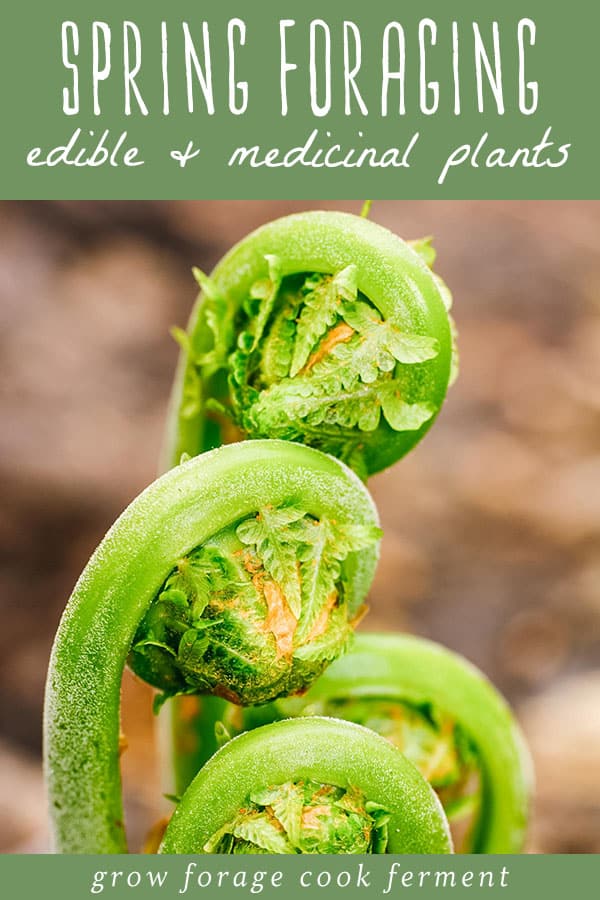
Want to save this post for later?
Wildcrafting Weeds
If you want to learn more about the edible and medicinal weeds that surround us and how to use them, check out my eBook: Wildcrafting Weeds: 20 Easy to Forage Edible and Medicinal Plants (that might be growing in your backyard)!
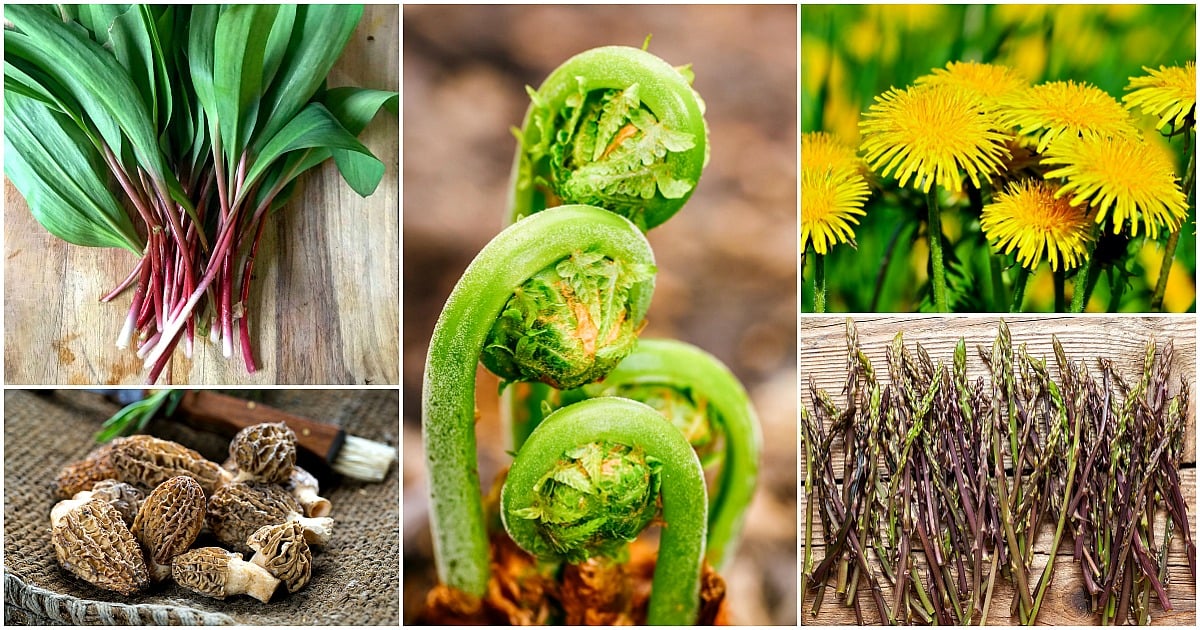
20 Edible and Medicinal Plants and Fungi to Forage in Spring
Before you begin foraging or wildcrafting, it’s really important to get a guidebook to use as a reference. You can find my favorite foraging guidebooks here and also some of the best foraging books for kids here.
Dandelion
Dandelions (Taraxacum officinale) are the quintessential spring foraging plant, with edible and medicinal flowers, leaves, and roots! They are super easy to identify, and any look-a-likes are edible and medicinal as well, so no worries there.
Dandelions are one of my favorite edible and medicinal weeds to forage and is one of the easiest backyard weeds to identify during spring. Make dandelion salve with the flowers, dandelion pesto with the leaves, and dandelion root coffee with the roots.
If you’re worried about harvesting dandelion blossoms in the spring because they might be food for bees, it’s actually not as big of a problem as it’s been made out to be.
Dandelions are actually not the best food for bees, and there are many other flowers we should be saving and planting for bees instead! (Read this post on flowers to plant for the bees).
Read more about foraging for dandelions and foraging for dandelion root here.
Related: 50 Ways to Use Dandelions and 13 Early Spring Edible Wild Greens
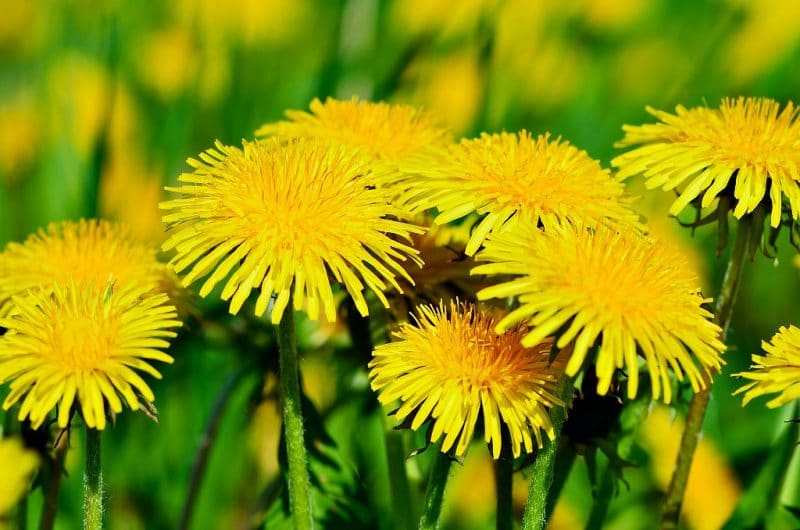
Chickweed
Chickweed (Stellaria media) is a tasty edible green that comes up in early spring. In some milder locations, it will even grow throughout winter.
Once it warms up chickweed will die back, so be sure to get it while you can so that you can add it to salads, make chickweed pesto, or even, chickweed salve!
Read more about foraging for chickweed here.
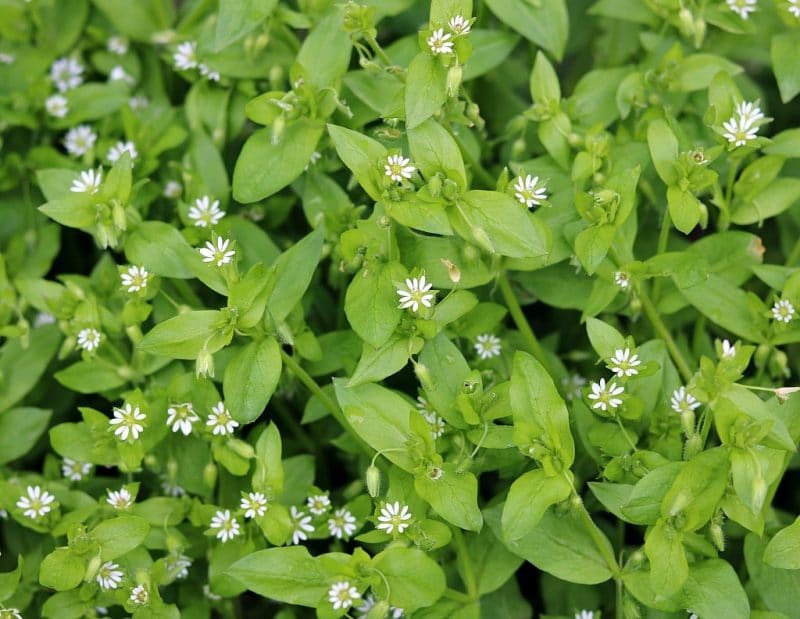
Miner’s Lettuce
Miner’s Lettuce (Claytonia perfoliata) looks a little bit like chickweed and is sometimes confused with it, but it is a different plant. It is a delicious salad green that grows wild in western states but can be cultivated in other areas.
Like chickweed, it prefers cooler temperatures and will sometimes grow right through the winter.
Read more about foraging for miner’s lettuce here.
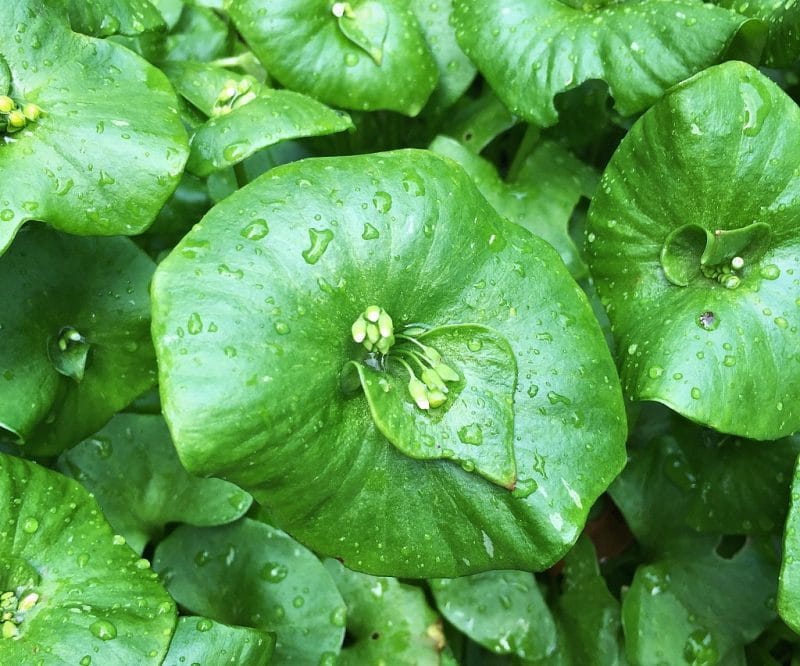
Wild Violet
Wild violets (Viola sororia or Viola odorata) and their leaves are both edible and medicinal. They come up in early spring and are often the first flowers of the season, making them a lovely sight!
They love cooler temperatures and will grow through the winter in warmer locations.
Make violet flower infused vinegar, wild violet soap, or violet leaf balm with your foraged violets!
Read more about foraging for wild violets here.
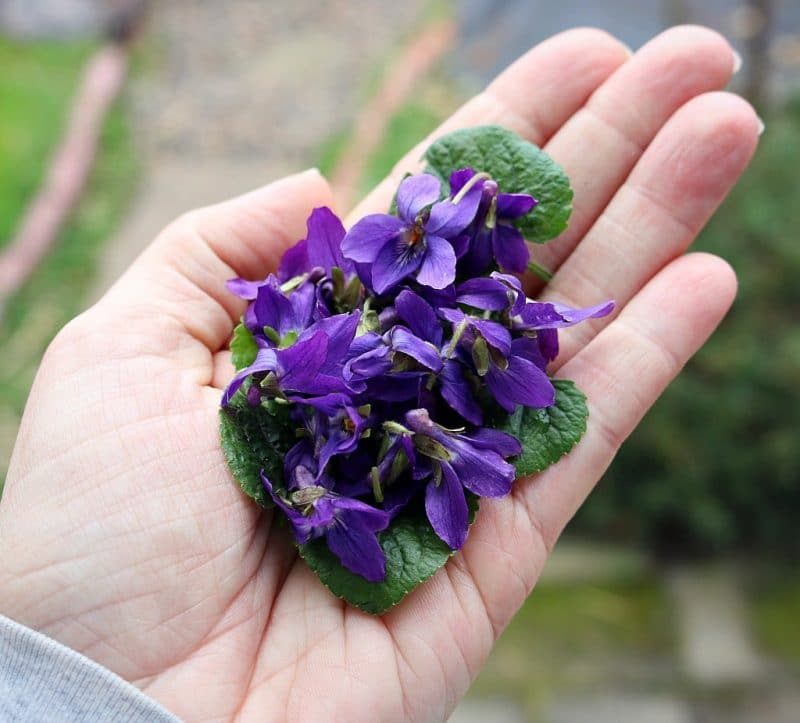
Clover
Both red clover (Trifolium pratense) and white clover (Trifolium repens) are beneficial to us in many ways.
The blossoms are sweet and edible, perfect for adding to baked goods or infusing into honey. Red clover is especially high in vitamins and minerals and makes a wonderful tea.
Make these red clover biscuits or these strawberry white clover cookies!
White clover iced tea is another favorite.
Learn more about red clover and white clover and their benefits here.
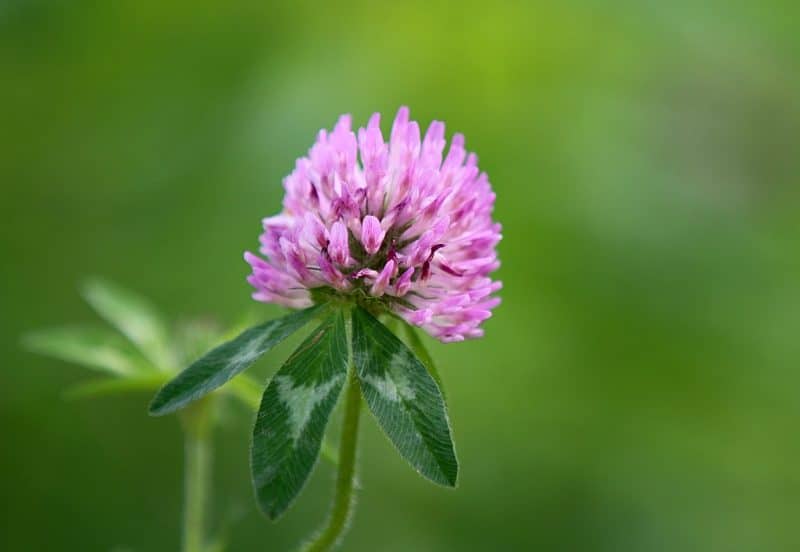
Fiddlehead Ferns
Fiddleheads are fern leaves before they’ve unraveled, and they are usually only available for a few weeks in the springtime.
The fiddleheads of the Ostrich fern (Matteuccia struthiopteris) are the most popular for foraging, as they are the tastiest. They have a flavor that is similar to asparagus and are excellent sauteed with butter and garlic.
Some other varieties of ferns are also edible as fiddleheads, such as western sword fern, bracken fern, and lady fern. These should all be cooked before consuming.
Some varieties of ferns are toxic, so be sure that you consult a guidebook and have a positive identification before harvesting.
Read more about foraging and identifying fiddlehead ferns here.
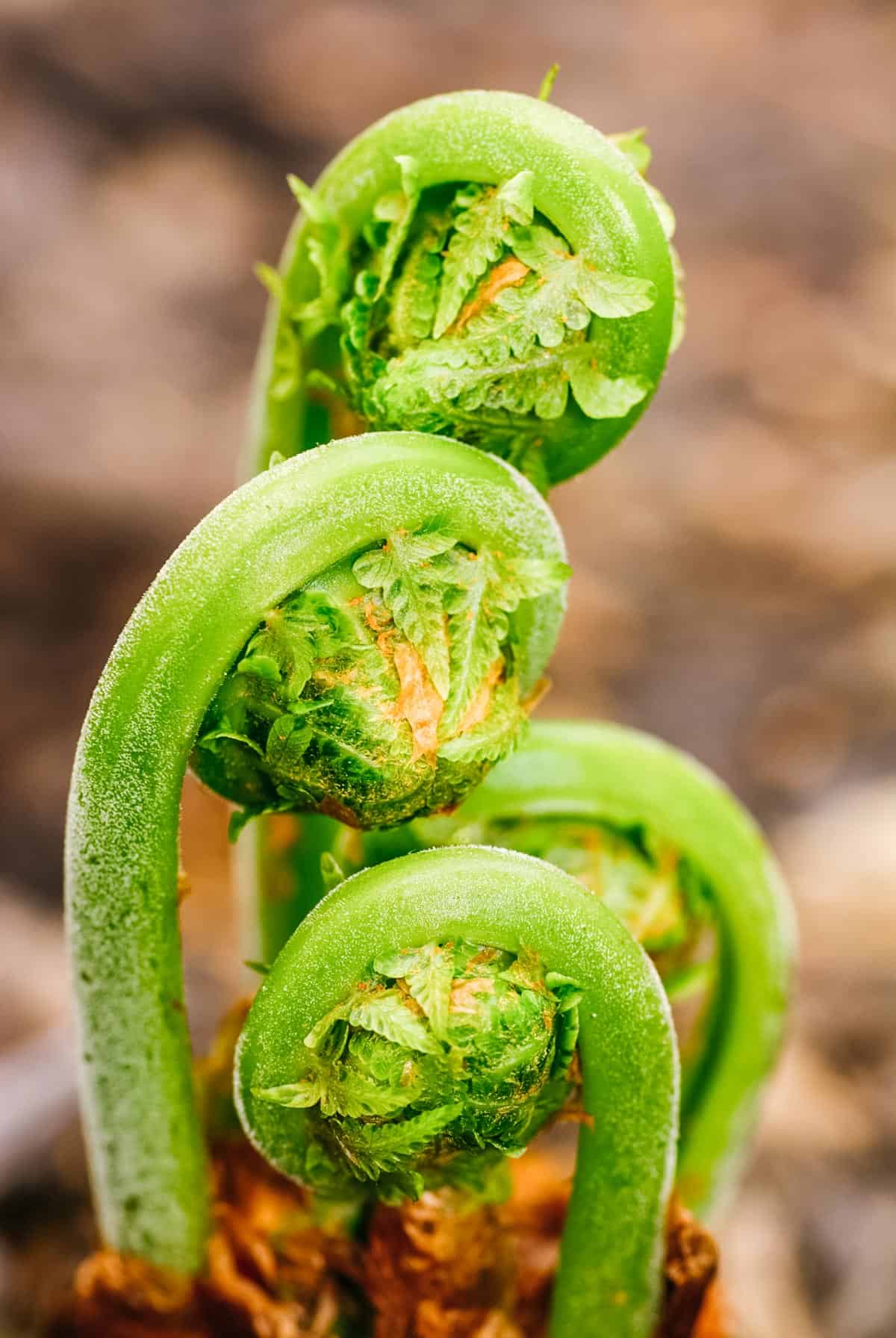
Ramps
Ramps (Allium tricoccum) are also called wild leeks and are in the same family as onions and garlic (Allium). They have a strong onion flavor and can be used just like you would use onions or garlic. I love making ramp pesto. They grow wild in the eastern United States and Canada.
Please note: Ramps require special harvesting practices as they are becoming threatened in many areas. Ramps should be cut leaving the bulb in the ground to regrow.
Read more about foraging and sustainably harvesting ramps here.
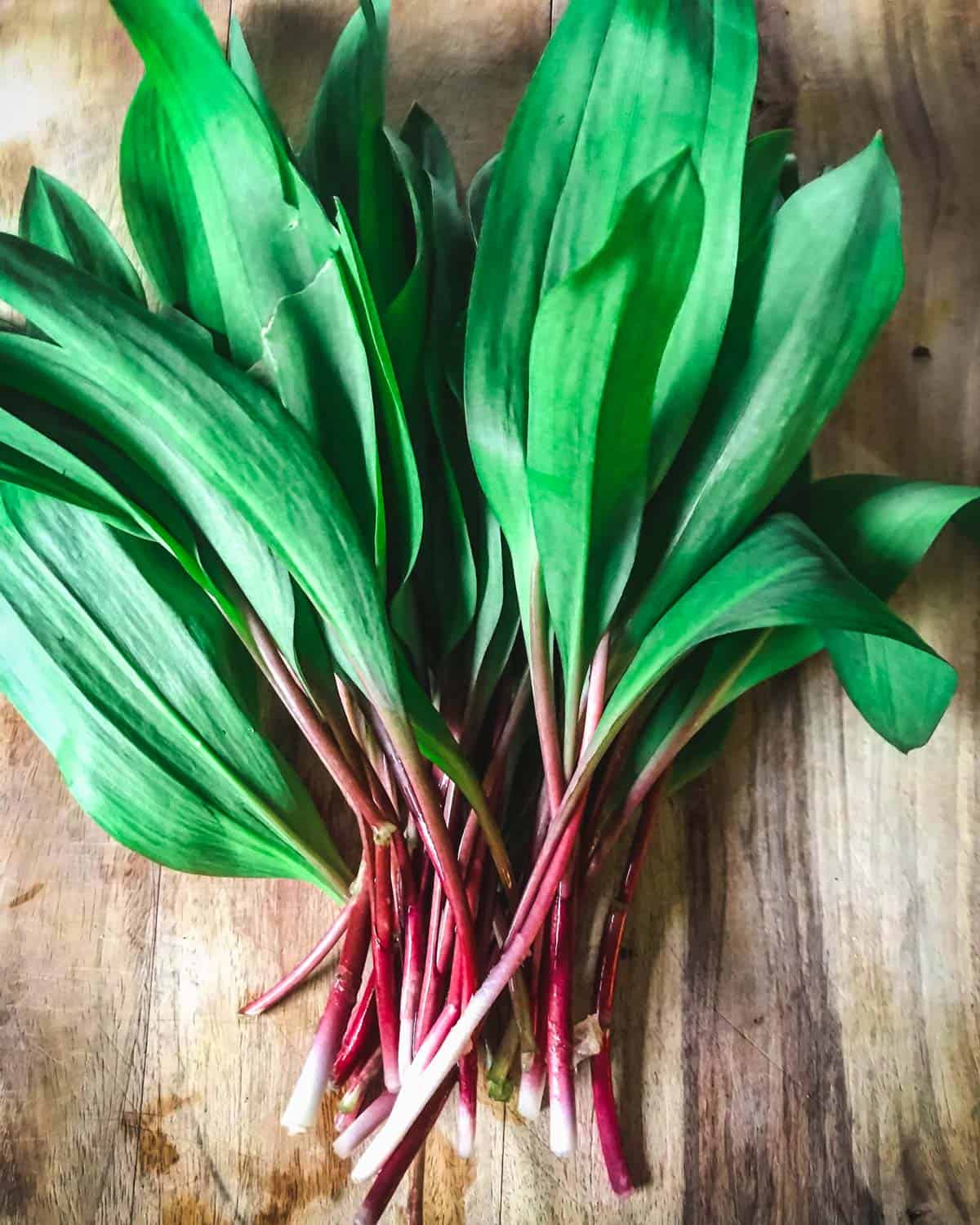
Cattail Shoots (and Pollen)
Cattails (Typha spp.) are known as the ultimate survival plant, as every part of the plant can be used in some way. The young shoots that come up in the spring are the tastiest part, resembling the flavor of a cucumber, and can be eaten raw.
The yellow pollen that covers the flower spike in late spring or early summer makes a delicious foraged flour substitute.
Make fermented cattail shoots or cattail pollen pasta!
Read more about foraging for cattails and cattail pollen here.
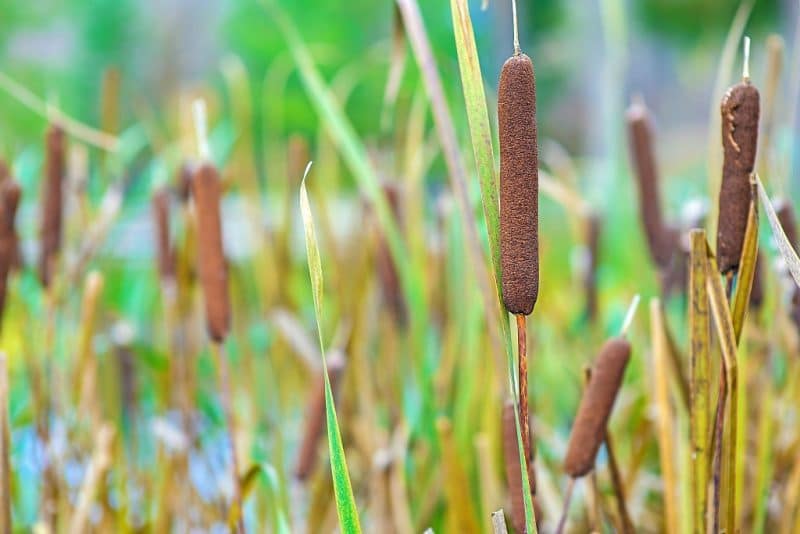
Wild Asparagus
Wild asparagus (Asparagus officinalis) is one that I’ve never found myself, but would absolutely love to one day! They are found in patchy areas throughout the United States and Canada and are notoriously difficult to spot.
Wild asparagus is just like regular garden asparagus in flavor—which means delicious! You can bet I’d make Fermented Asparagus & Garlic with it if I did find it!
Read more about foraging for wild asparagus here.
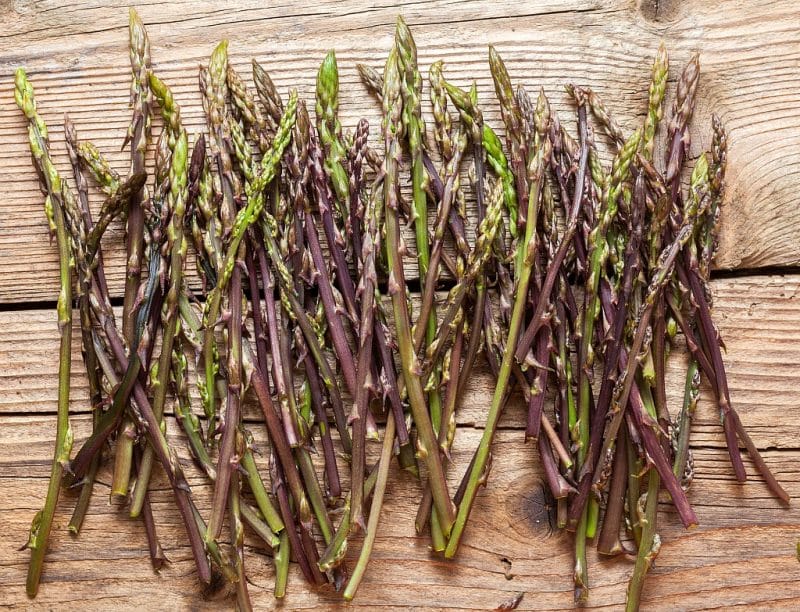
Stinging Nettle
Stinging nettle (Urtica dioica) is one of my favorite plants to forage for in the springtime. They are usually pretty easy to find, but don’t forget to bring a pair of gloves for harvesting!
Nettle is a superfood that is packed full of vitamins and minerals. Cooking the plant will dispel its sting.
Make this stinging nettle-ade recipe or these nettle chips with your foraged nettles!
Learn more about foraging for stinging nettle here.
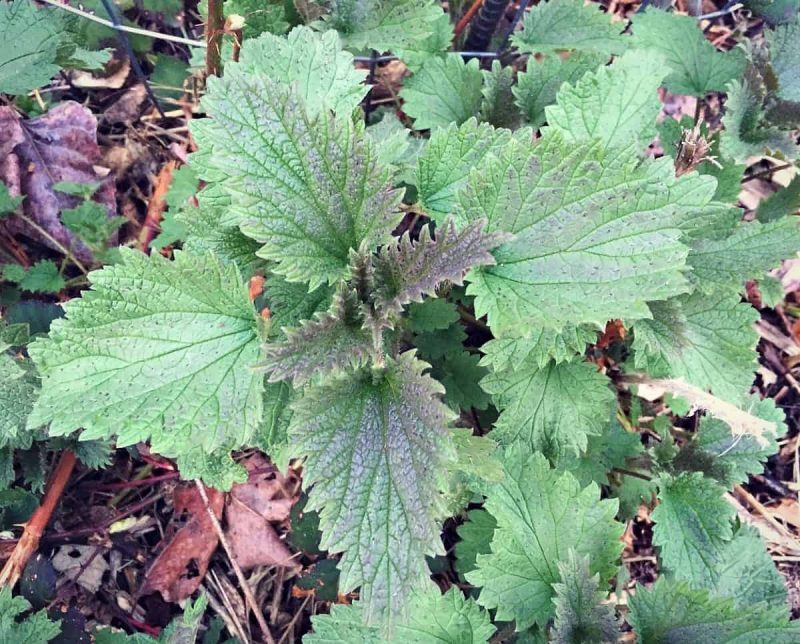
Dead Nettle
Dead nettle got its name because of its supposed resemblance to stinging nettle (I don’t see it) but without the sting.
Purple dead nettle (Lamium purpureum), which is pictured below, is the most common variety and is often found in backyards or gardens. It is perfect to add to a wild greens salad or pesto.
Learn more about foraging for purple dead nettle here.
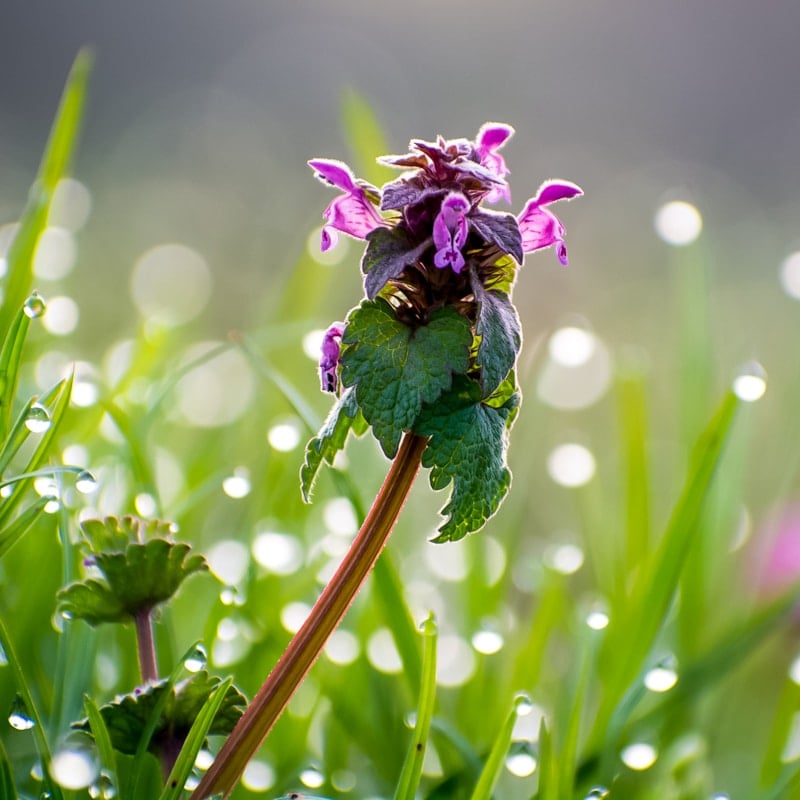
Purple dead nettle is one of the plants covered in my gather + root online foraging course! Sign up below to get free info sheets from the course, all about purple dead nettle.
Henbit
Henbit (Lamium amplexicaule) is in the same family as purple dead nettle, and they are often confused with one another. If you compare the two photos above you can really see the difference between them.
This is another tasty green that can be added to salads or made into a wild pesto. Chickens love henbit too, which is where it got its name!
Learn more about foraging for henbit here.
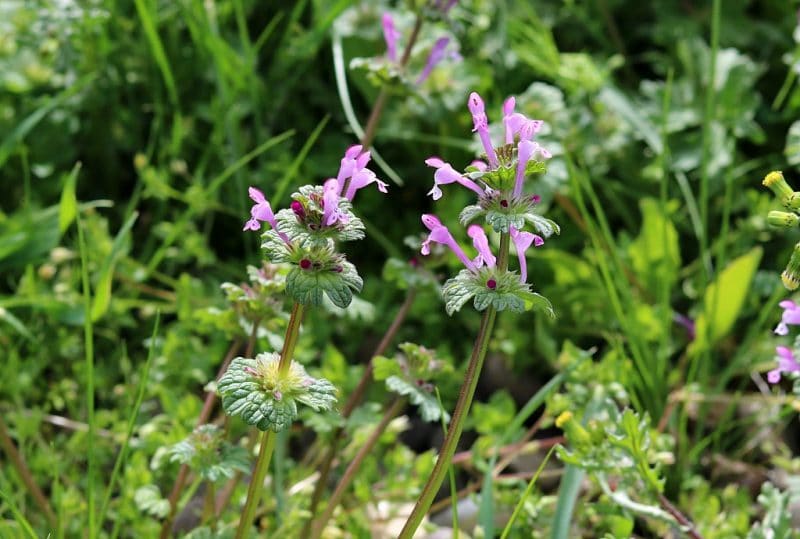
Garlic Mustard
Garlic mustard (Alliaria petiolata) is a prolific plant that is sometimes considered to be invasive. This means that you can and should harvest as much as you want! It has a strong garlicky flavor that is tamed by blanching.
Make this garlic mustard pesto with your foraged greens!
Learn more about foraging for garlic mustard here.
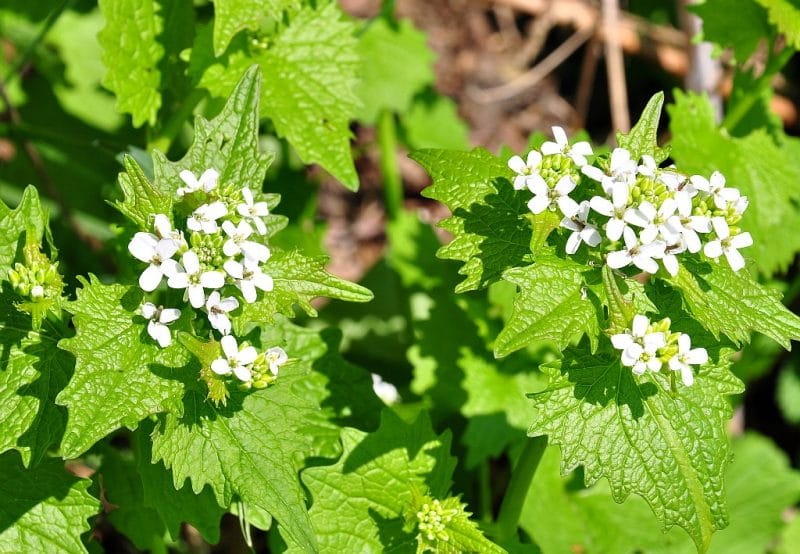
Willow
Most everyone is familiar with soft and fuzzy pussywillows that emerge in the springtime. Not everyone knows that willow (Salix spp.) is a highly medicinal tree! White willow bark in particular is a powerful pain reliever—it actually has the same compounds in it as aspirin!
Make willow bark tea to help ease your aches and pains.
Learn more about foraging for willow here.
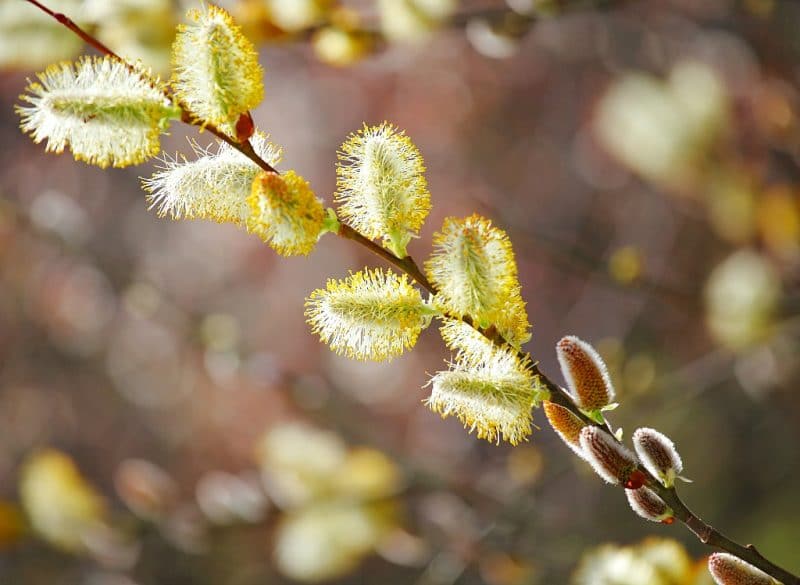
Yarrow
Yarrow (Achillea millefolium) is another highly medicinal plant that comes up in the spring. Its frilly, frond-like leaves make it easy to identify. It is also technically edible, but is quite bitter so is most often used for medicinal purposes.
Use yarrow for treating fevers and coughs, or to help stop bleeding. I also have this recipe for wild rose and yarrow soap and yarrow salve!
Be aware that yarrow can sometimes be misidentified for poison hemlock!
Read more about foraging for yarrow here.
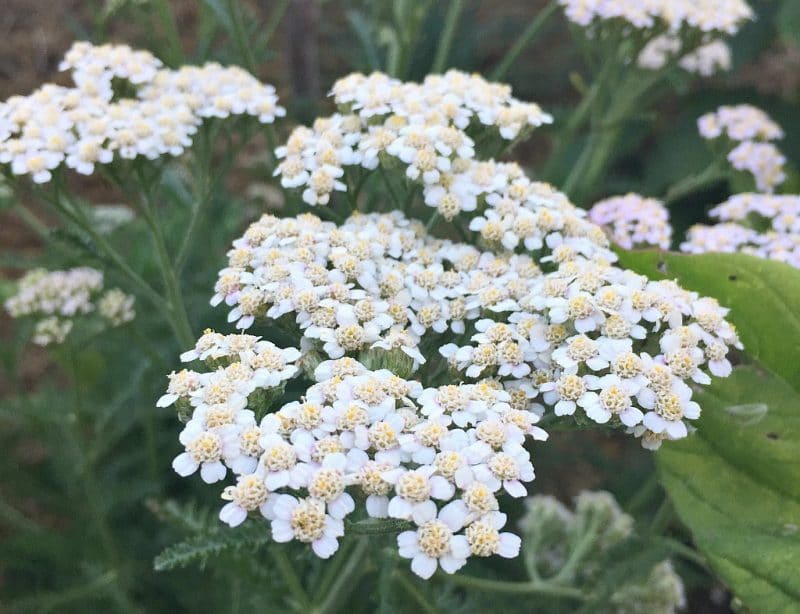
Plantain
Plantain is both edible and medicinal and is a very important herb to know about. There are two main varieties, broadleaf plantain (Plantago major) and narrowleaf plantain (Plantago lanceolata), and both are beneficial.
Young and tender plantain leaves can be eaten raw and are highly nutritious. Older leaves can be added to soups and stews.
Using plantain medicinally is as simple as chewing up a leaf and putting it on a bug bite, bee sting, or minor wound. It stops itchiness and helps to heal wounds. Plantain is also a great herb to use in an herbal salve.
Read more about foraging for plantain here.
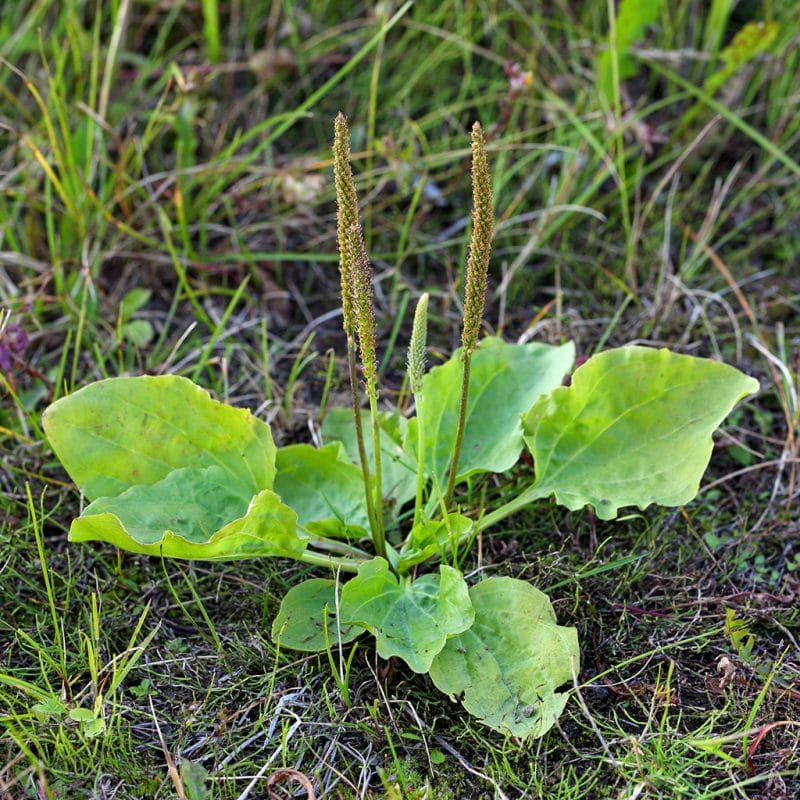
Cleavers
Cleavers (Galium aparine) is a plant that often surprises people with its medicinal properties! It is most well known for its habit of being a pesky garden weed and sticking to everything.
Turns out that cleavers is highly nutritious and is good for the lymphatic system. It is edible, but I recommend blanching first to dispel the sticky hairs.
Here are some great recipe ideas for using cleavers.
Read more about foraging for cleavers here.
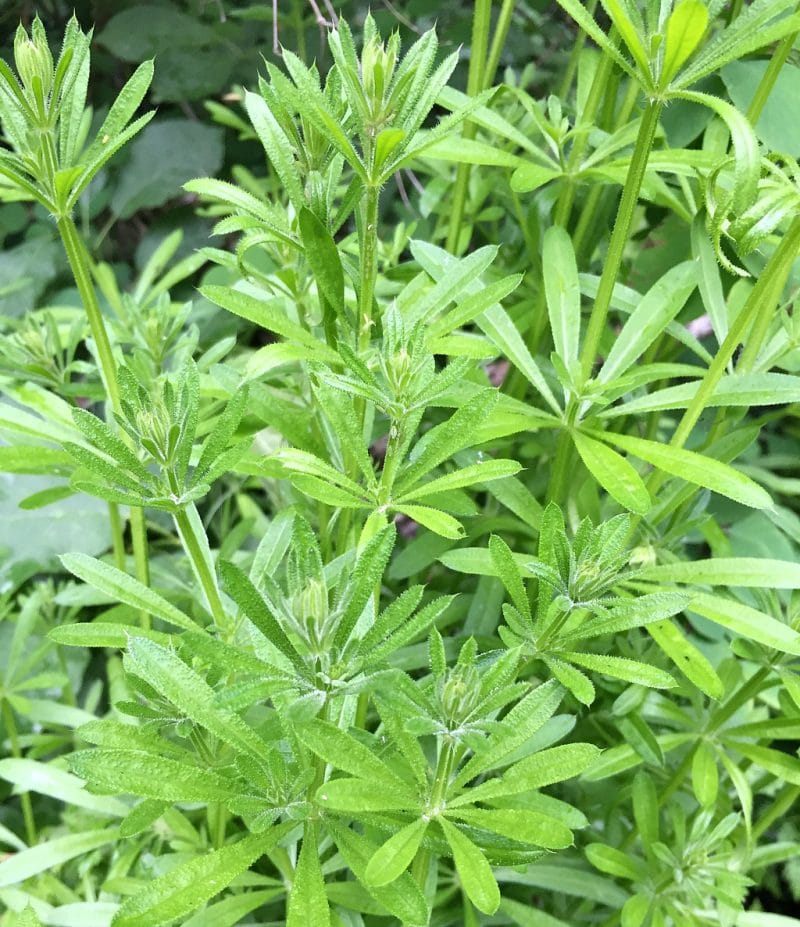
Morel Mushrooms
Everyone gets excited about the thought of finding morel mushrooms (Morchella spp.) during spring foraging forays. Maybe it’s because they have a relatively short season, or that they can be a bit elusive to find. Regardless, morels are some of the best mushrooms to forage for in the springtime!
Be sure to use a mushroom guidebook whenever you are out mushroom hunting.
Morels should be cooked before eating and can be used like any other mushroom in recipes. Try them simply sauteed or even deep fried!
Learn more about foraging for morel mushrooms here.
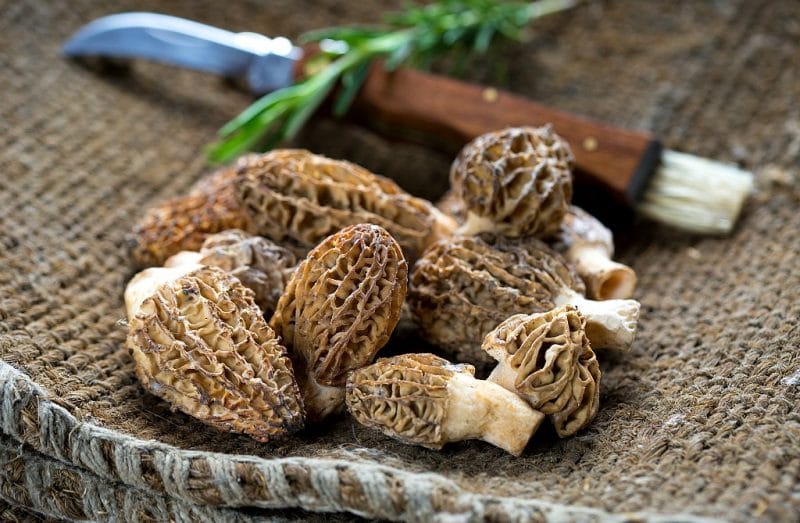
Oyster Mushrooms
Oyster mushrooms (Pleurotus ostreatus) will grow spring through fall in many locations.
They are relatively easy to identify because they always grow on trees or stumps (if it’s not growing from a tree, fallen log, or stump, it’s not an oyster mushroom!). They are also some of the tastiest wild mushrooms around.
Be sure to use a mushroom guidebook whenever you are out mushroom hunting.
Learn more about foraging for oyster mushrooms here.
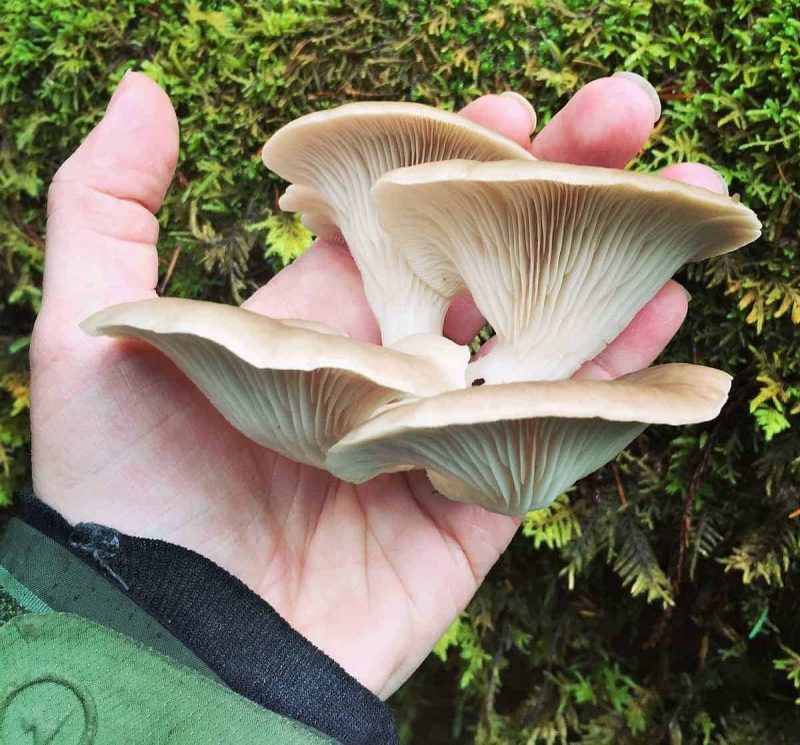
King Bolete Mushrooms (Porcini)
King boletes (Boletus edulis), also known as porcini mushrooms, are considered a delicacy in many places for good reason: they’re delicious!
“Spring Kings” are often found growing in the forest duff underneath conifer trees, and they start to emerge in the springtime. King boletes will also commonly grow in the late summer and fall after rainfall.
Boletes can sometimes be tricky to identify, be sure to use a mushroom guidebook whenever you are out mushroom hunting.
Learn more about foraging for king bolete (porcini) mushrooms here.
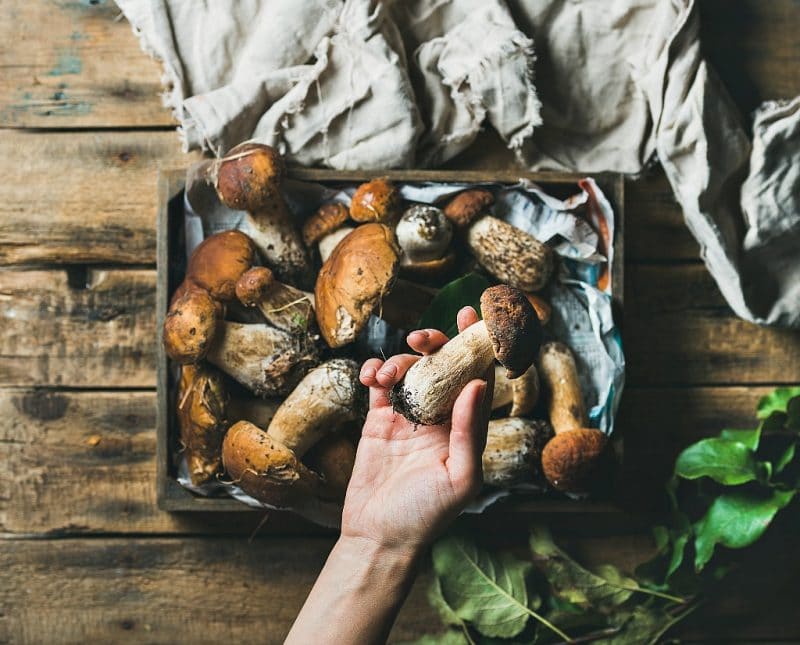
I hope this list has helped you learn what to forage in spring. It really is a great time of year to get outside and collect some wild plants and mushrooms. Happy spring foraging!

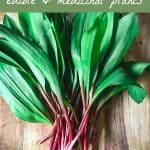
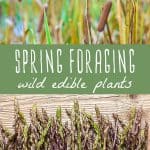
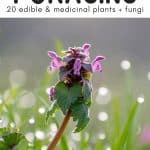
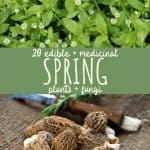
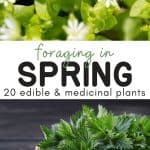
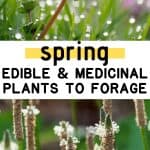
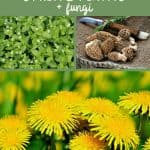
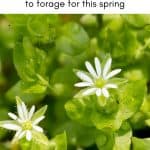
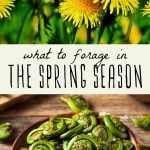
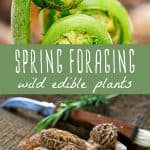

I was taught and have learned to forage every every month of every year of my life since I learned how to walk. For the longest time I thought everyone was taught way, but as I got older it became obvious that there were very few kids in my classrooms, of public school in Southwest Ohio, that even knew you could eat flowers. This was very polarizing and subjugated those few of us to be referred to as Earth- huggers, Forest People, Children of the corn and many of nature-centric monikers. I felt privileged to be one of the “Chosen” because it was the first “priesthood” that I was ever ordained into by my loving great-grandmother, grandmother and mother.
I am 57 years old now and not regretting that I teach my children the same way. This should be classroom curricula from the first day of school. Why did we allow this to be lost?
I completely agree!
Teach me all the things! I am from Southeastern Ohio and those people who act like that are my family. I am a nurse. I want to know and learn the magic of faraging and medicine from the earth!
What county? I’m in Monroe County
It’s great that you’ve learned all this, I totally agree that it’s the best medicine for the heart and spirit. However, it’s important to know that one cannot sustain oneself on plants and mushrooms and hunting game is also important! I know many people who forage and believe that mushrooms are the same as meat and they don’t think they need anything else and I think that’s where ‘non-initiates’ of wild foraging see the negative side of atomized plant-knowledge. Without folk-knowledge and traditions, one’s private knowledge and experience is seen as esoteric and it disturbs people.
Yes it should,about time they taught kids something useful!
Any info on using Arrow leaf balsam would be helpful, as it is very abundant in the NW.
(I was wondering if it can be used like Dandelion?)
thank you
Hi there. No, arrowleaf balsamroot cannot be used the same way as dandelion. Arrowleaf is primarily used for its medicinal root. You can learn more from this blog post.
I am 82 yes old and have been foraging since I was 22. I have tried many things and would like to share my meager knowledge with anyone. If I could be of help by sharing, it would be great.
That is incredibly kind of you. Our elders have so much to share with us and too often it gets lost. I have wanted to learn about foraging for years. Maybe we could be pen pals and you could share some of your knowledge with me. I could then compile it onto a blog or website so that others may benefit from it too. I live in the national forest in southwest Colorado near the San Juan mountains. We are at 7,000 ft and our yard has tons of different plant species. I’ve learned how to use many of them for botanical plant dyeing, but would love to know what can be eaten. The deer seem to love it all. My email is littlesustainable@gmail.com
Hope to hear from you soon
Kindly, Jamie
Hello! I live in the PNW and am so passionate about learning how to forage and properly utilize what I find in nature. Do you have a website or somewhere I can find your knowledge? I hope you see this and thank you for posting and having a heart to teach! I’ve always wanted to have elders knowledge be a larger part of my learning experience but it can be hard to get connected!
Warmly,
Lish
I have not foraged since I was young and lived in Kentucky. I now live in South Carolina and want to get back onto foraging. Any knowledge you have to share, I would be eager to learn. I am eager to hear from you.
Hi William I am 35 year young lady with 3 boys under 10 and living in the piedmont area of North Carolina. I’m brand new to this . BUT I am extremely eager to learn and want to be able to get a lot of knowledge. I hope you see this and I hope to hear from you soon.
I see that you wrote this message 2 years ago, but I just now see this article and comment. I would love to learn from you if possible. Is there anyway we can keep contact?
Hi William,
I also just saw this post. I am sure that it is tio late for a response but I would absolutely love to hear about your foraging experiences and knowledge!!
Thank you to everyone that provides this much needed information!
I have forgotten what Creecies looked like from many years ago. Do you have a picture of them? I may have been pulling them for weeds in my yard.
Wild asparagus is the same as domestic. Birds will eat the (poisonous to humans) red berries from gardens in the fall and spread the seeds. Look along roadside ditches. They like to be near water, but not in it. Easiest to locate in the fall by the bright canary yellow stems and branches after a frost. Remember the location for the following spring.
Hello! I’ve been foraging for Dandelions like crazy this spring! So far I’ve made 4 loaves of bread—so delicious! I plan on making jelly with the blossoms, too. I’ve also collected Lilac blossoms for jelly-making as well…a new one for me! I’ve been trying to identify those plants you’ve mentioned so far…our yard is usually full of plantain; I’ve used this on a bee sting, and it did to help take the swelling down, and made an oil from it last year…such a helpful herb! I’ve have Wintergreen for years here, and that is a helpful herb, along with Rosehips, which I use in my cold/sinus remedy. Such good things abound, you just have to know what you’re looking at and where to look!
I forage for dandelions now!!